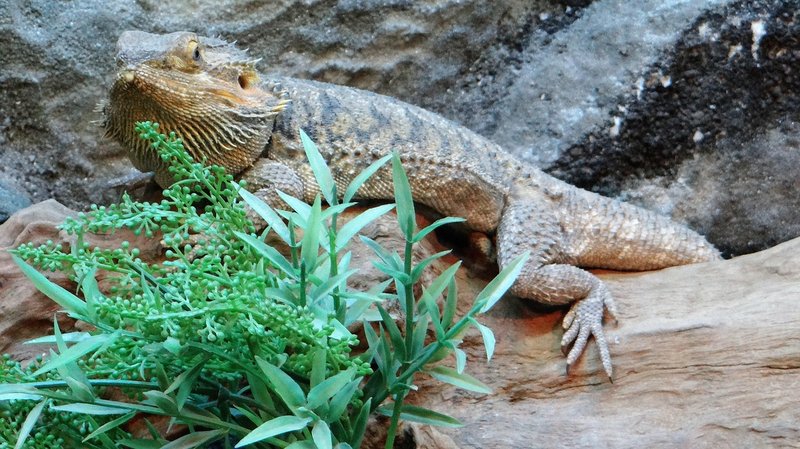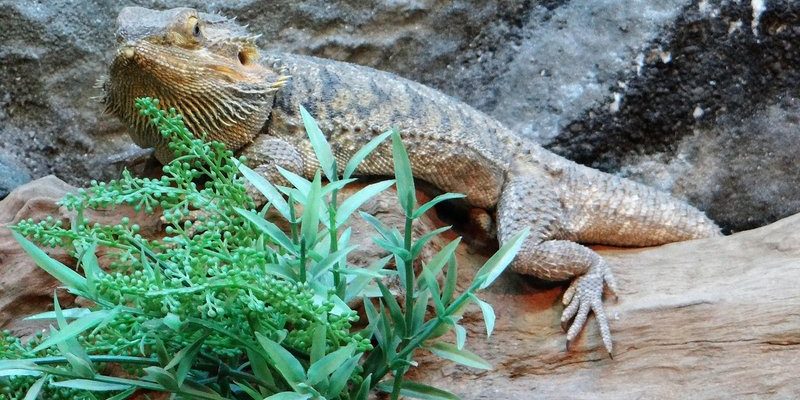
In every corner of the world, you’ll find lizards, from the deserts to the marshes, each adapted to their specific surroundings. Understanding the role of the lizard in its natural habitat reveals not just their importance but also how intricate our ecosystems truly are. Whether they’re hunting insects or serving as prey, these little reptiles are woven into the fabric of nature in a way that seems simple yet is incredibly complex. So, let’s dive deeper into the world of lizards and discover what makes them so important!
A Brief Overview of Lizards
Lizards are reptiles that belong to the order Squamata, which also includes snakes. They come in various shapes, sizes, and colors. Some might be as small as a fingernail, while others can grow to be several feet long! Common types of lizards include *geckos*, *iguanas*, and *skinks*. Each type has specific adaptations that help it survive in its habitat, whether it’s a desert, forest, or grassland.
One of their most fascinating features is their ability to lose their tails when threatened. This can distract predators, giving the lizard a chance to escape. The lost tail can regrow over time, showing how resilient these creatures really are. This remarkable ability is just one of the many ways lizards have adapted to thrive in the wild.
Lizards are cold-blooded, which means they rely on external sources to regulate their body temperature. You might see them basking in the sun, absorbing heat to stay active. Once warmed up, they’ll venture out in search of food or mates. Their behaviors and physical characteristics are all about survival, showing how nature fine-tunes these creatures over centuries.
The Role of Lizards in the Food Chain
Every creature in an ecosystem has a role, and lizards are no different. They are often considered *mesopredators*, which means they sit somewhere between the top predators and the smaller animals. Lizards help control the population of insects, spiders, and other small creatures.
For instance, a common garden lizard might eat dozens of bugs in a single day. This helps keep pest populations in check, benefiting plants and gardens. Here’s the thing: if lizards weren’t around to consume these insects, we could face a surge in pest populations that would damage crops and affect our food supply.
Additionally, lizards are also prey for larger animals. Birds, snakes, and mammals rely on lizards for nutrition. In this way, lizards serve as a critical link in the food web, connecting different levels of the ecosystem and supporting wildlife diversity.
Habitat Diversity and Adaptation
Lizards have an incredible ability to adapt to various habitats. From arid deserts to lush rainforests, they’ve got a home almost anywhere you look. Each species has developed unique traits suited to its environment. For example, the *Side-blotched Lizard* thrives in arid conditions, while the *Green Anole* prefers humid forests.
These adaptations are crucial for survival. In deserts, lizards have evolved to be active during cooler times of the day, practicing behaviors like burrowing to escape the heat. In contrast, rain-dwelling lizards often have vibrant colors to blend in with their surroundings, preventing predators from spotting them easily.
You might be wondering how climate change affects these adaptations. As habitats shift or disappear, lizards may struggle to find food or shelter. Maintaining habitat diversity is essential for their survival and, by extension, for the health of ecosystems worldwide.
Pollination and Seed Dispersal
Believe it or not, lizards can play a role in pollination and seed dispersal. While they aren’t the primary pollinators like bees or butterflies, some species help transport pollen as they move from plant to plant in search of food. This can lead to healthier plants and a more balanced ecosystem.
Moreover, lizards often consume fruits and seeds. After digestion, some seeds are excreted in different locations, allowing new plants to grow elsewhere. This not only contributes to plant diversity but also helps maintain the ecosystem’s overall health.
This interconnection shows how even the smallest creatures have significant impacts on their habitats. Lizards, with their unique habits, help keep plant populations thriving, and it’s a nice reminder that every bit of nature works together.
Challenges Faced by Lizards
Despite their adaptability, lizards face numerous challenges today. Habitat destruction, climate change, and pollution threaten their populations. Urbanization, for instance, can strip away their natural homes, leading to a decline in species diversity.
The introduction of invasive species can also be detrimental. Non-native predators may catch lizards off-guard, reducing their numbers. Climate change, altering temperature and weather patterns, further complicates their chances of survival. For example, some lizards cannot tolerate extreme heat, leading to local extinctions.
By understanding these challenges, we can take steps to protect lizard habitats. Simple actions like planting native plants in our gardens or supporting conservation efforts can make a difference.
The Importance of Conservation
Conservation efforts play a massive role in protecting lizards and their habitats. By preserving ecosystems and promoting biodiversity, we ensure that lizards can continue their essential work. Building wildlife corridors, replanting native flora, and minimizing pesticide use are all ways we can help.
Community awareness is also crucial. Educating others about the importance of lizards can foster a sense of responsibility for local wildlife. You might see a lizard lounging on a rock and think, “Wow, that little guy has a big impact!”
Every small action counts. When we advocate for conservation, we’re not just helping lizards; we’re supporting the entire ecosystem. Healthy ecosystems benefit everything from plants to larger animals and ultimately us humans.
Lizards may be small, but their role in nature is anything but minor. They’re essential for controlling insect populations, supporting plant growth, and serving as a food source for other animals. Their ability to adapt to various environments highlights the resilience of nature.
As we learn more about these fascinating creatures, it’s important to recognize their challenges and take action for their conservation. By doing so, we help maintain the delicate balance of our ecosystems.
So the next time you see a lizard sunbathing in your backyard or darting across the sidewalk, remember: that little creature is a vital part of our world. Protecting their habitat ensures that they—and all of us—can thrive together.

